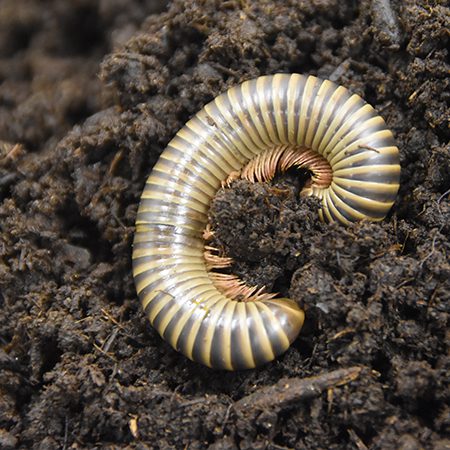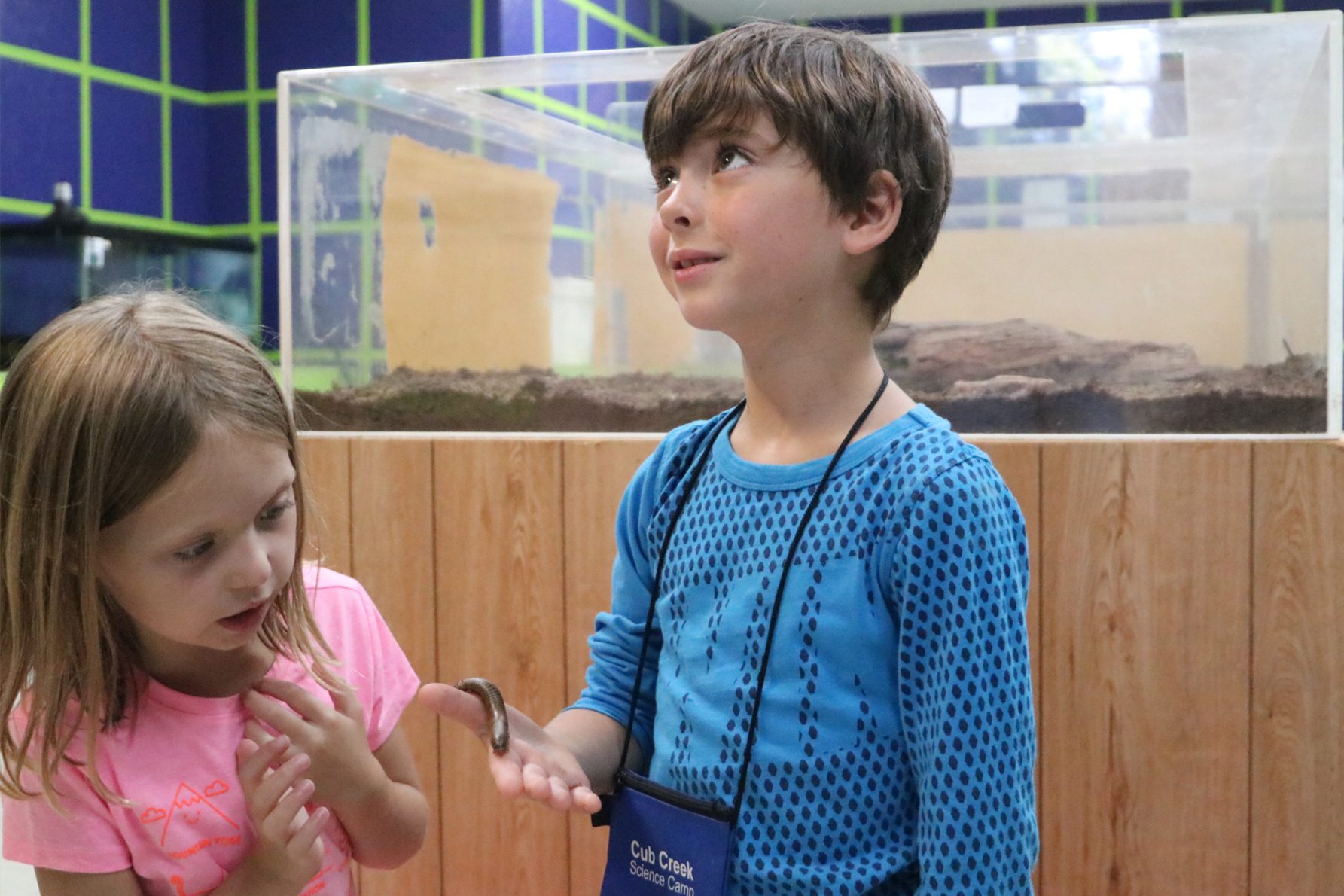American Giant Millipede
Narceus americanus
These millipedes are also called the worm millipede or the iron worm. They are the largest north american millipede, almost 5 in long. They are very cylindrical in shape, almost like a long tube. The American Giant Millipede is gray or brown in color with their legs and each of their body segments bordered in red. The prefix “milli-” means a thousand and the suffix “ped-” means foot. These insects were named 1000 foot, clearly based on their large number of legs. No millipede has a thousand legs, at most they may have 750, but most are under 100. Millipedes have segmented bodies and on each segment are 4 legs. They are commonly mistaken with centipedes as they both have a multitude of legs. Centipedes have much less, two legs per segment, and are carnivorous. Millipedes are completely herbivorous, preferring to eat decaying leaf litter or fungi. They are known as little recyclers and are essential in the decomposition process of their environment.
Millipedes do not bite in defense, but rather curl up in a ball and secrete chemicals. These chemicals can vary from just a bad odor to an irritant to cyanide. American Giants release a bad odor and can discolor your skin, but are otherwise harmless. They prefer damp environments to live in, and to burrow under the leaf litter they will eat.

Millipedes are found all over the world, but are more common in the southern hemisphere.
HABITAT -Moist areas like wet forests to basements.
DIET -They are detritivores, meaning that they eat decaying plant matter.
FUN FACT -Millipedes were likely to first animals to live on land.
SOCIAL BEHAVIOR -They are generally solitary and shy animals, but can get used to handling.
ACTIVITY -They are usually nocturnal, foraging for food at night.
PREDATORS -Any insectivore larger than the millipede will eat it, like birds, badgers, and rodents.
SIZE -American Giant Millipedes can grow to about 4-5 inches long.
RELATIVES -Millipedes closest relative is the centipede, which they are often mistaken for.
CONSERVATION -These millipedes are not evaluated under the IUCN.
Cub Creek Animal Care Information
Housing - Our millipedes live in a glass terrarium filled with sphagnum moss to mimic their natural forested environment. They spent much of their time buried under the soil, only coming up to eat or drink. They get sprayed down with water multiple times a day to keep their soil moist, just like it would be in their native habitat.
Diet - Being herbivorous scavengers, we give lettuce for our millipedes to munch on. Occasionally, they also get treats like mushrooms or fruits.
Enrichment - Invertebrates get much of their enrichment through exploration of their enclosure, rather than the toys or puzzle boxes that we provide for much of our other animals. The millipedes have lots of soil to tunnel through, and our campers give them additional stimulation by handling them throughout the summer.


